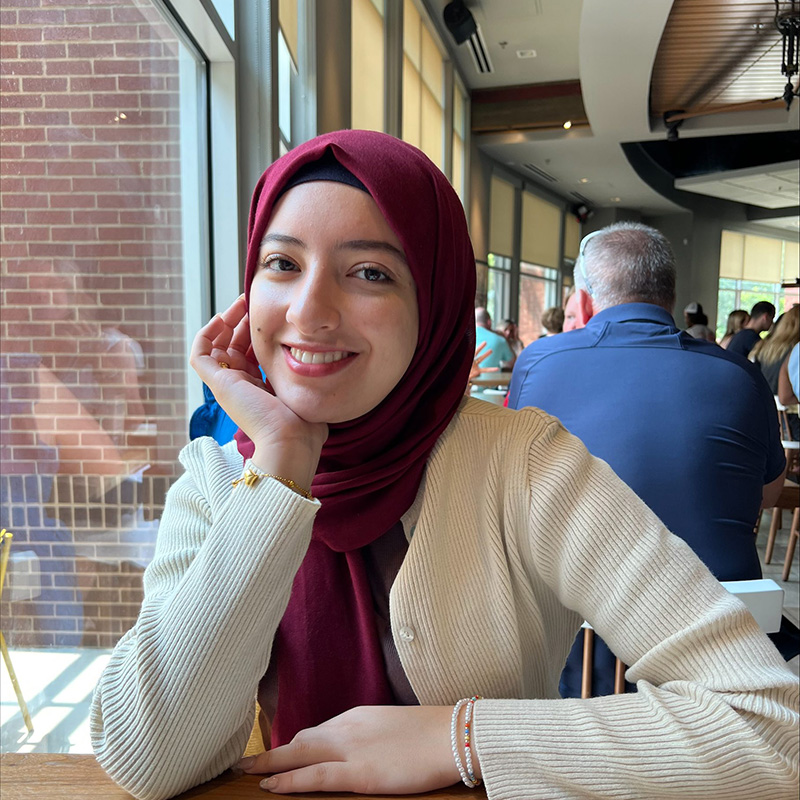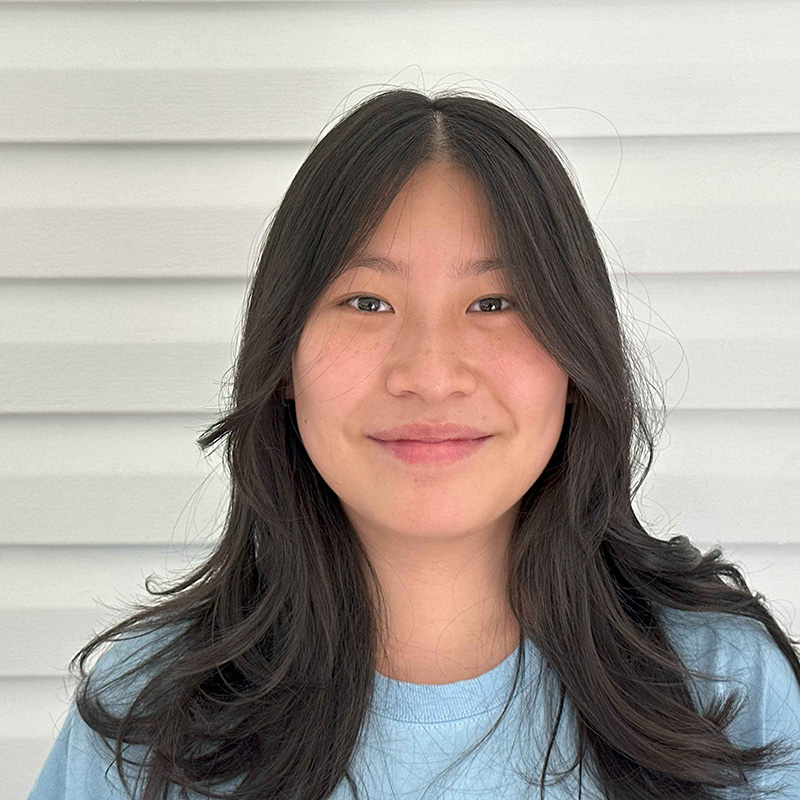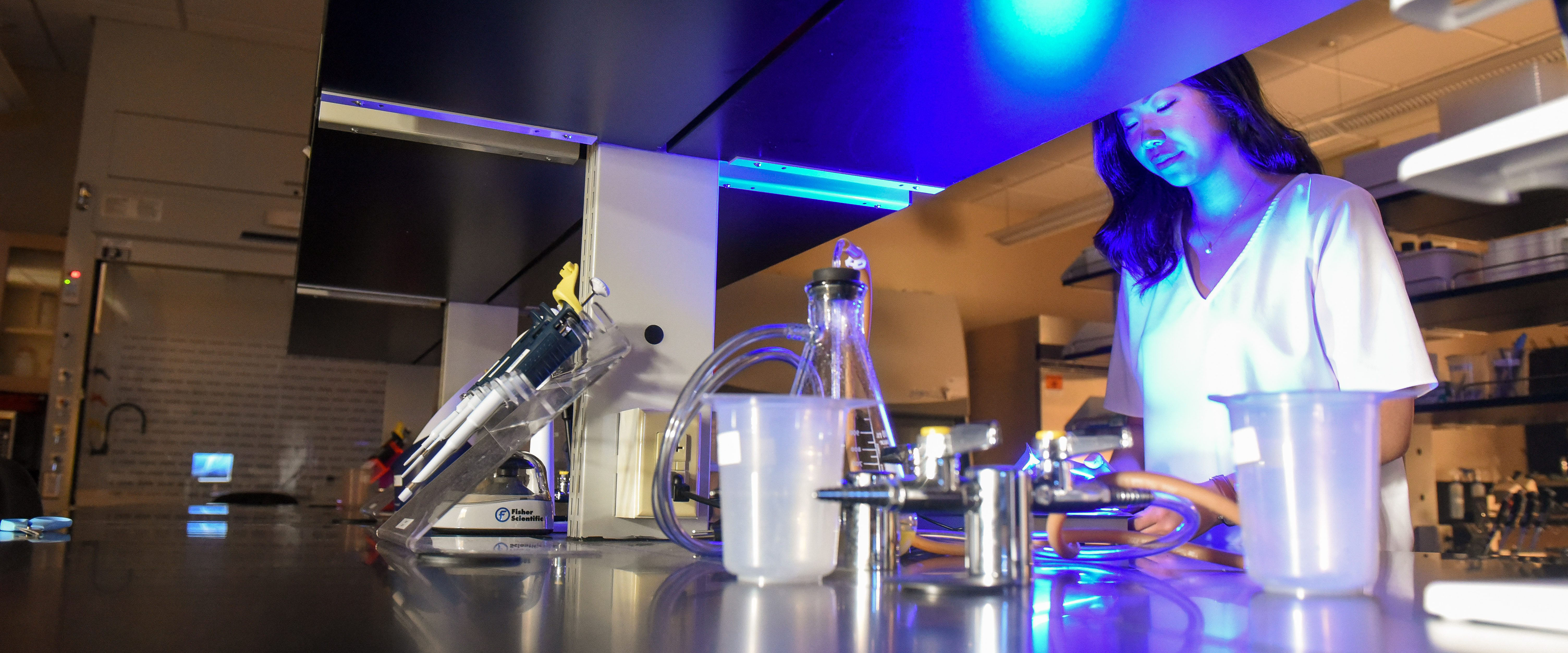Summer Undergraduate Research Fellowships in the Sciences (SURFS)
Belmont University started the SURFS program in 2015 with just 15 participants and a handful of faculty. Now, this is a major component of the undergraduate experience in the College of Sciences and Mathematics (CSM). Through SURFS, students eligible to be employed receive a stipend to work with our research faculty over the summer. Currently, we are excited to provide this opportunity to approximately 50 students each summer, working with faculty within and beyond CSM.
In addition to streamlining administrative aspects of individual summer programs, SURFS offers research seminars, professional development seminars, as well as social activities for those undergraduates engaged in research on our campus during the summer.
General questions can be directed to beth.bowman@belmont.edu

The Sciences at Belmont University have a long history of supporting undergraduate research providing students the opportunity to hone skills critical for their professional development. For over 20 years, students have been able to conduct research during the academic year and enroll in the Summer Scholars Research Program especially popular for rising seniors. In 2014, the need was recognized for a parallel program to support early-career undergraduates wanting to jump-start their research experience without taking on a six-credit-hour summer load; not to mention making research available to early career students provides valuable opportunities for career discernment and a rich context for learning that happens in the classroom.
In the fall of 2014, with support from the Provost’s office, seven volunteer faculty members from the College of Sciences and Mathematics (CSM) agreed to launch a six-week summer research program aimed at supporting rising sophomore and junior science majors. Participants would receive a stipend and a dorm room to participate in six weeks of full-time original research. That fall, the first Summer Undergraduate Research Fellowships (SURFs) program was advertised to students within CSM. As the SURFs program was envisioned to primarily support early-career students, it was decided the application process would not ask students to indicate their major, rather applicants were encouraged to choose research projects based on their own interests and were asked to compose a brief essay on why they were interested in research. That first year, sixteen students applied for the program and fifteen students ultimately conducted original research culminating in a small poster presentation on the last day of the program.
Over the years, SURFs has steadily grown to include more students and a broader slate of research projects. In the summer of 2016, faculty stipends were funded by the Provost’s office and, by the summer 2019, faculty from all four Departments in CSM mentored students as well as faculty from the College of Pharmacy and the Curb College of Entertainment and Music Business. By 2020, the program expanded further to include faculty from the College of Health Sciences. While only 16 students applied for the first SURFs program in 2014, 116 students applied for the 2021 SURFs program with 55 fellows being accepted.
In 2016, a select number of local high school students from Montgomery Bell Academy were invited to join ongoing research projects as part of a new Research Intensive Summer Experiences (RISE) program for high school students. In 2021, High school students from Ravenwoood and Brentwood High Schools joined students from MBA to participate in research and take a three-credit-hour course in statistics.
Over the history of the program, SURFs fellows have gone on to present their work at regional and national conferences, publish their research in peer-reviewed journals, and been accepted into prestigious graduate programs including Tufts, Harvard, Stanford, UNC Chapel Hill, Emory and Northwestern. Together, the Summer Scholars, SURFs, and RISE programs at Belmont University have strengthened a culture of experiential learning; a culture in which students expect the opportunity to engage in original, graduate-level research at an undergraduate pace. This culture is producing graduates recognized for problem solving and critical thinking skills sought after by both employers and graduate programs around the country.
The SURFs Program at Belmont University gratefully acknowledges support from:- Provost Office of Belmont University
- College of Sciences and Mathematics
- The Colleges of Pharmacy and Health Sciences, and the Curb College of Entertainment and Music Business
- A generous gift from W. Ferrol and Becky Spence
Previous Participant Projects

Sumiah Muhsin
Creepy Crawlers in Motion: The influence of substrate on spider leg kinematics
For many animals, locomotion is essential to capturing prey, avoiding predators, and expanding habitat range. One of the primary factors influencing the mechanics and performance of locomotion is the environment in which these behaviors occur (Blob & Higham, 2014). Different environments can impose unique demands on animals, affecting their ability to move efficiently and effectively. Here, we explore how spiders adjust their leg kinematics and body posture in response to different substrates. Wolf spiders were observed moving across three types of substrates: dry (control), wet, and surfactant conditions. Movements were recorded dorsally and laterally using GoPro cameras at 240 fps. Velocity and body posture data were collected via video and image processing programs and analyzed using a repeated measures ANOVA. Our findings revealed significant differences in locomotor performance and kinematics based on substrate type, with the most pronounced effects observed in the surfactant condition. Specifically, there was a noticeable difference in average maximum velocity and postural behavior between wet and surfactant conditions as the spiders used their legs to adjust their body height. Likely, this was in response to the surfactant breaking down water surface tension which causes the spider to sink into the fluid media. These findings indicate that spiders modulate their locomotor behavior in response to the substrate. Our research provides insight into how surfactant pollution could potentially impact arthropod locomotion and ultimately survival.

Cody Woten
Yeast Two-Hybrid to Observe Mex67 Interaction With Nup42 FG Domain Truncations
In eukaryotic cells such as the yeast Saccharomyces cerevisiae, mRNA export from the nucleus to the cytoplasm is essential for gene expression. DNA is transcribed into RNA in the nucleus and relocates to the cytoplasm to be translated into functional protein. Mature transcripts export through nuclear pore complexes (NPCs), which are doorways embedded in the nuclear envelope that permit passage of specific molecules. Selective export is mediated by NPC proteins that contain unstructured regions termed FG domains that both block non-specific transport and allow for the transit of proteins called transport proteins. One of these transport proteins is called Mex67, which binds RNA and ferries it across the NPC via interaction with FG domains. We aim to determine whether specific regions of the NPC protein Nup42 FG domain bind to Mex67 to allow mRNA export. To test this, we have cloned plasmids that contain truncations of the Nup42 FG domain to perform a yeast two-hybrid (Y2H) experiment for binding to Mex67. In this experiment, growth on selective media lacking histidine indicates interaction between Mex67 and the Nup42 truncation. These experiments will determine whether transport proteins have preferred binding sites as they cross the NPC to allow for organization of transport.

Jenny Wu
Generative AI as a Tool for Creating Educational Materials in Software Development
There are various ways individuals learn and absorb information, including but not limited to auditory, verbal, and visual styles. In particular, those with visual learning styles prefer to see information presented in the form of visualizations like figures or graphics. This preference may lead to an easier time retaining and understanding information. One way to provide visual aids to those individuals is through the use of Large Language Models (LLMs). The continued development and research into LLMs have had a large impact around the world with their advanced capabilities for writing narratives and coding. More specifically, LLMs can be used in many different fields, including education for complex subjects like computer science.
In this paper, we use LLMs to create visual educational resources for various concepts in computer science and software development (e.g., loops, arrays, docker, code review). In particular, our goal is to harness the knowledge embedded in LLMs to create visual representations such as comics to simplify complex computer science or software development concepts, making them more accessible and easier to understand. Our process involves a semi-automated process in which a custom prompt and a concept in computer science are given to an LLM tasked with providing instructions for the generation of comics and single-images.
Contact Us
College of Sciences & Mathematics
1900 Belmont Boulevard
Nashville, TN 37212
Phone: (615) 460-6417

